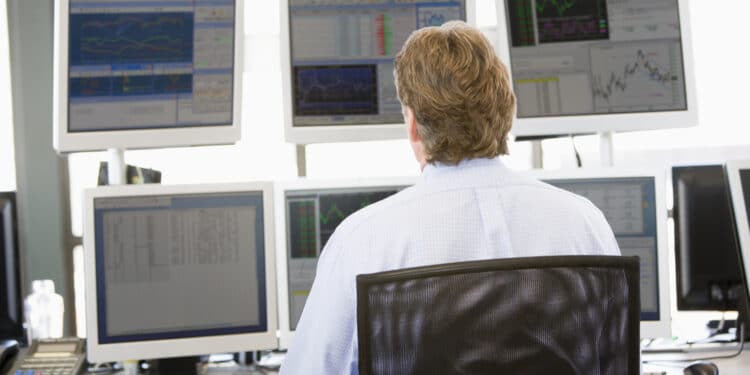These are two trading approaches available for trading forex: mechanical and discretionary.
Traders who conclude to do business through mechanical trading should know that the trading signals springing forth from this system are usually rooted in technical analysis applied in a systematic way.
In contrast, discretionary trading uses experience, intuition, or shrewdness for entries and exits.
Mechanical trading systems
Mechanical trading systems give anyone who wants to put their money in the forex market the know-how to arrange commands for their business strategies into a software plan.
When the commands are put down, and there is a pilot run, the mechanical trading system will be able to do any necessary actions such as entries, exits, and position sizing automatically.
Mechanical trading systems categories
Mechanical day trading system
The system is usually used to hold a position from a few minutes to as long as to the closing of the market.
Day trading systems are generally applied in the futures markets, more so in the equity indexes such as the S&P 500, NASDAQ 100, and the Dow 30.
Lastly, intraday volatility and liquidity provide the best environment for mechanical trading.
Mechanical swing trading
It refers to a trading style where one seeks to buy or sell at potentially pivotal prices a ride a move, catching trend continuation or reversal.
Swing trading works in most market states. However, returns are made where prices trend and have significant volatility during the primary trend.
The approach is used for profiting from the intermediate swings of a trend. In comparison to trend trading, the position is usually held for a shorter period of time. It is, therefore, a more active form of trading.
It should, however, still be possible to swing trade successfully using end-of-day data while working full time.
Mechanical trend following system
Trend following is whereby currencies are bought when prices are trending upwards and sold when trending downwards while expecting the trend continuation.
Mechanical trend following calculations and time-frames are some of the techniques which give knowledge to the basic movement of the market for the generation of forex signals.
These may include the current market price calculation, channel breakouts, and not forgetting moving averages.
This method does not forecast particular price levels; it just gets on the trend and goes on with it.
Reasons for trading using the mechanical trading system
Currently, the use of trading automation applications is starting to be widely used. The trading automation application offers a wide selection of strategies.
Although some are too complex, there are others designed specifically for ordinary users to make it easy to understand the Application programming language.
From the backtest or forward test, the market conduct can clearly be seen. You can collect the data about the risk and reward, win rate, drawdown, and signal accuracy level. Additionally, this makes your trading more methodical and exclusive to emotions or opinions.
Trading signals on your setup will immediately tell you when to enter or exit. Besides that, you become more disciplined in implementing risk management.
If you are busy doing other duties, there is no need to frequently monitor the market because trade execution can be done automatically.
All you need to do is to set parameters or indicators, apply risk management, and you can leave the computer desk while the trading system is running.
Mechanical trading system shortcomings
Mechanical trading can get complicated depending on how many frameworks are used to build a strategy.
Some of the mechanical trading systems can be incredibly complex, such as high-frequency trading (HFT) algorithms that well-known hedge funds or investment banks widely use.
The costs needed to build such a system can reach hundreds of millions of dollars.
Discretional systems
A discretionary trading setup makes you an active participant in all phases of the trades. It creates and provides you with a great deal of leeway when making market decisions.
Economic data evaluation, broad‐market indexes analysis, sectors strength determination all depend on the investor. Additionally, the identification of high‐relative‐strength stocks breaking out of long trading ranges, hoping to catch a new trend, is also up to the investor.
When looking at discretional setups, the following must be considered.
Firstly, it must be said that the discretionary trading system is not for the beginner.
Psychology plays a big part in trading, and native human psychology is not set up to work in the right way for financial markets.
For instance, your experience and research may suggest that a trade “should” go a certain way, but it does the opposite. Your natural reaction would be that you are right and that it just needs a little longer to turn around.
When trading the markets, it is better to accept the loss before it becomes any larger – certainly, it could turn around. If not taken care of, the position may keep going against you and cripple your account.
You cannot rely on your gut feelings from other aspects of life when it comes to financial markets.
Reason for and against discretionary trading
In discretionary trading, decisions on which deals to make are made on the basis of the data at hand at the time.
Discretionary traders follow strategies with clearly designated dealing commands.
Traders use inclinations in engaging the trade and managing it. For example, if an investor has a hard time tracking his trading signals, it’s ok for him to use a mechanical setup in which his assessment will not play an important role.
Discretional setups are used by more experienced investors. They automatically make alterations to market conditions. Essentially, investors have the responsibility to change trading conditions to market movement.
Conclusion
Mechanical and discretional trading systems do well when combined with good expertise and experience in the Forex market. You should choose the one that matches your personality to have a higher chance of being profitable in the long run.




